Conserving Long Branch – August 2016 Update Addendum from David Godley
The current post is an addendum to an earlier post entitled:
Conserving Long Branch – August 2016 Update from David Godley
The photos at this post are from a previous post from David Godley entitled:
They are included at the post you are now reading, in order to bring attention to the above-noted [post.

Distinctive Character of Long Branch – Historic Long Branch houses from which elements could be transferred to new development to reinforce character: Long Branch Avenue (7)
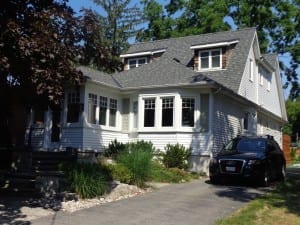
Distinctive Character of Long Branch – Historic Long Branch houses from which elements could be transferred to new development to reinforce character: Lake Promenade (Second Storey added) (8)

Distinctive Character of Long Branch – Historic Long Branch houses from which elements could be transferred to new development to reinforce character: 35th St. (9) -DSC02865_9

Bad Development for Long Branch – Example of houses that are not sensitive or harmonious: 32nd St. (10)
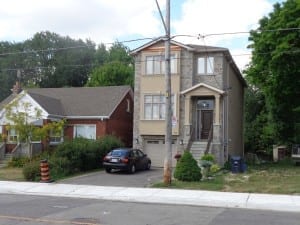
Bad Development for Long Branch – Example of houses that are not sensitive or harmonious: 23rd St. (11)
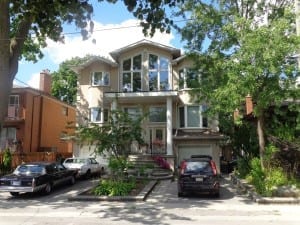
Bad Development for Long Branch Example of houses that are not sensitive or harmonious: 35th St. (12)
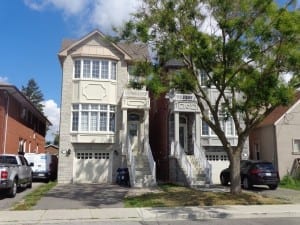
Bad Development for Long Branch – Example of houses that are not sensitive or harmonious: Elder Ave. (13)
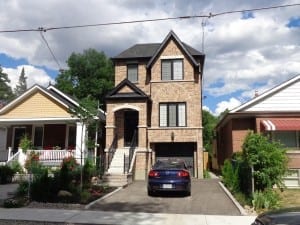
Bad Development for Long Branch – Example of houses that are not sensitive or harmonious: 39th St. (14)

Bad Development for Long Branch – Example of houses that are not sensitive or harmonious: Walnut Cres, Monster House dwarfing historic cottage (15)
The following message is from David Godley:
Greetings from lake side Long Branch.
Applications for Thursday 1 September Committee of Adjustment
82 27th Street, Severance and Variances
48 Elder Avenue, Severance and Variances
9 26th Street, Variances, Double Garage
11 Walnut Avenue, Variances for new house
4 41st Street, Variances, Adding a second storey.
Submissions should be made by 4pm Thursday 25 August to be in the Committee of Adjustment member’s package.
Decisions on Applications from 4 August Committee of Adjustment
2 Shamrock, 0.62 density for 2 soldier houses. Refused unanimously
78 29th Street, 0.72 density for detached house. Approved 4 to 1
Ontario Municipal Board Hearings
80 23rd Street, October 6
2 Ash, 16 September
9 Atherton Crescent, heard July 7 2016, twin soldier houses, Refused
Congratulations to all involved.
4 Shamrock, October 17
New Applications
35 36th Street, Contact nmilros@toronto.ca
122 and 124 Fortieth Street, Commercial premises.
Previously reported.
11 Walnut, Variances. Scheduled Sep 1st Committee of Adjustment (COA)
5 Ramsgate, Severance and variance soldier houses (3 storey soldier houses 0.35 to 0.69 density) Planning Department recommending deferral.
5 31st St, Severances and Variances for Soldier Houses (3 storey soldier houses 0.35 to 0.59 density)
40 37th St, Severances and Variances for Soldier Houses (3 storey soldier houses 0.35 to 0.69 density)
22 33rd St, Severances and Variances for Soldier Houses
Digitisation of Application Information Centre
All applications submitted after June are in DVD form for Committee of Adjustment applications. Not only can the circulated plans be seen but so can elevations. When Planning Department comments are submitted, these too can be viewed.
Try for 5 Ramsgate. Google “Toronto aic” click “development applications” Select Committee of Adjustment and Ward 6. You have a choice of list or map. Select “learn more” in panel and then supporting documentation.
It sounds complicated but it is not and will save lots of trips to meet the friendly Committee of Adjustment staff. Thank you Planning Department.
The Battle of Long Branch: Summary of Issue
Long Branch Neighbourhood is a historic community which has been converted from cottage country to permanent residences over the last century or so.
The chief feature is variety of low density detached housing of no more than 2 stories on larger lots often 50 feet wide and 1 storey on smaller lots.
There is an intermingling of other residential uses as well as smaller lots. The area is well treed.
Soldier houses have been introduced which are typically 3 storey detached houses on 25 feet wide lots at around double the density permitted. They are uniform and alien modern suburban designs based on maximum profit and are similar modules are found throughout the GTA. They are generated by outside forces not local.
About 4 years ago the OMB started overruling the Committee of Adjustment and the community and approving soldier houses.
Long Branch has been the centre of soldier house approvals in Toronto.
This has this resulted in a clash of building styles, distinctive and varied vs uniform and dense. It has also pitted those wanting to develop against the community who generally wish to keep the character into which they bought.
The entrepreneurial building industry and some individuals naturally wanted to cash in on this bonanza.
If some applicants can build soldier houses it seems reasonable for all – so many new applications were submitted.
A community meeting was held in May 2015 to discuss the issue. The Urban Design Guidelines and Community Forums to discuss individual applications were initiated.
This year the Committee of Adjustment has started approving soldier houses and now the Planning Department is supporting some too.
Individual soldier houses and “walls of townhouse appearance” soldiers with the concomitant loss of trees are replacing the semi bucolic streets.
The intention of City policy is harmonious and sensitive development and gradual change. The zoning bylaw reflects this.
Recently the OMB, who started the battle for whatever reason, now appear to be reforming and have made important decisions refusing similar development based on the test of parameters ie not exceeding the features of those houses nearby.
The Committee of Adjustment, for whatever reason, have lost the plot on certain applications. Likewise the Planning Department, most notably, on 9 Meaford.
Misunderstanding on Meaford
Letter sent to Shawna Bowen, Urban Design Guidelines Study and Jill Hogan, Manager of Community Planning and copied widely. Both recipients acknowledged immediately.
Basically there is a misunderstanding on neighbourhood character analysis.
If both the Neighbourhood and Planning Department use the methodology described below there will be a lot more soldier house refusals both at the local level and on appeal.
The City are currently advertising for staff to work on the Local Appeal Board, the alternative to the OMB for severances and variance appeals.
[Note from Jaan Pill: Text of letter follows below; for ease of online reading, some of longer paragraphs in the text have been broken into shorter ones.]
Hi Shawna and Jill,
I would just like to mention initially that my illustrated analysis of Long Branch, which I previously forwarded, is now posted on the “PreservedStories” website in better format.
Introduction
The matter I wish to draw the study team’s attention can make the Urban Design Guidelines more effective.
It all stems from the Planning Department’s comments about 9 Meaford which a number of staff on the Long Walk visited after the official guided tour was over.
You will be familiar with the case but I am going to include background as well so it is in one place and for the benefit of those copied. I have also submitted a draft checklist of items to be considered for any severance with variances by the community and for that matter the Planning Department.
The thing is that if the Department use similar lines of thinking in the future, the guidelines will be less effective. I want to change this.
Soldier houses (three storey detached houses usually on 25 feet wide lots) on Meaford cannot be mitigated to conform to the character by urban design guidelines – unless the correct urban design guideline analysis is done.
I attended the community meeting on 9 Meaford on August 10 (see below) and met with Anthony Hommick, the planner for the file, on August 15.
I have great respect for Anthony’s planning abilities. I have worked on a number of occasions and find him professional and very open to discussion. It was with help from Anthony that I was able to discover why the community was so shocked with the Planning
report and that I was completely perplexed. The report states that the Department had no concerns about the severance and variances.
The Issue
The issue is that the Planning Report has been prepared without sufficient urban design knowledge and principles.
This is a reason why the Department’s report supports one of the most insensitive profit-generated, high density forms of housing on one of the most sensitive streets in Long Branch. Meaford Avenue is an unusually well defied piece of townscape that exists at a
low density (a majority are bungalows) with lots averaging over 40 feet wide with the lowest being 35 feet wide and the highest being over 50 feet. It has a narrow roadway with no sidewalks. It is well treed – a semi bucolic oasis of green. It is in the interest of
the City and community that it remain this way. With appropriate and desirable redevelopment this can happen.
The Planning Department’s recommendation is at odds with all previous recommendations. (With such a case surely it would be better not to commit to a position but wait to see what information and viewpoints come out of the community meeting.)
The issue of planning elitism i.e. making a judgment without community input or later negotiating a deal with the applicant without those who are impacted involved, is questionable in such cases.
The Planning report also provides a precedent for supporting more discordant development on Meaford and elsewhere. (All severances in Long Branch granted by the OMB have been decided on precedent.) For example on Ash Crescent there has been application activity which has been recommended for refusal by the Planning Department up to now. The 9 Meaford precedent would change this. A similar application to Meaford at 5 Ramsgate was submitted recently.
First, no urban design analysis to measure character fit is part of the application.
In these cases it is essential to have elevations of the row of houses with the proposal shown in relation to them, an analysis of the street block as referenced in OPA 320 in terms of lot frontages, number of storeys and densities and a bird’s eye view to show
impacts clearly. Without these the applicant does not understand context and the public cannot understand the issues. It is necessary for the Committee of Adjustment and the OMB and part of the reason there have been so many losses at the OMB.
Second there has been no Urban Design section input into the case. The report was based on incorrect urban design principles modified to be completely clear by the Ministry of Municipal Affairs. See below in green.
Policy for Neighbourhood Character Analysis
These principles were not as clear as they could have been in the 2006 Official Plan but were always the intent. They have been clarified in OPA 320 now City Council policy and approved by the Province but appealed to the OMB.
The key point is that the block on both sides of the street is the area for analysis to ensure a flowing rhythm for the street. The nearby policies are defined as “the physical characteristics of the properties in the same block that also face the same side of the
street as the development site.”
I was involved in the finalisation of these policies. They were based on a hierarchy of evaluations from the most important being the abutting houses through to the row in which the proposal sits, then the whole street which can be seen clearly from the front of the house and finally the neighbourhood beyond which is the least important. The first three evaluations were lumped into one and the priority of the block over the rest of the neighbourhood was removed politically against technical advice.
I learned from Anthony that the analysis of nearby housing was done using the administrative circulation list of 60 metres which is used for all severance cum variance proposals throughout the Province.
This has little relevance to analysis of urban design fit. The character of 23rd Street and 25th Street, (other than the corner lots on Meaford) is not relevant to the character on Meaford. Streets should vary in character not attempted to to be made similar. It
appears the 25 feet wide lots on these two streets were influential in the recommendation to support 9 Meaford applications.
At that time the recommendation for support was unfathomable and seemingly arbitrary. The recommendation also was for a community meeting (the community is most thankful) which was fully appropriate and fortunately this was also the decision of the Committee of Adjustment.
Urban Design in contrast to Land Use Planning
Urban design (planning in the third dimension, not just land use planning) is central to such planning applications as 9 Meaford. The Official Plan for neighbourhoods is much more about urban design than land use.
Section 2 policy is to save neighbourhood character through diverting density to other areas.
Section 3 is entitled urban design and includes the following statement “New development will be massed and its exterior facade will be designed to fit harmoniously into its existing and/or planned context and will limit impact on…properties”, (also gradual change is encouraged).
Section 4 includes 4.1.5c “Development…will respect and reinforce the existing physical character .. in particular…heights, massing,scale …of nearby residential properties. OPA 320 has added density and defines prevailing and predominant as most frequently occurring. Setbacks, size and configuration of lots, landscape, heritage buildings are all a dimension of urban design. The policy is strict in that “No changes are to be made by severance or variance that are out of keeping with neighbourhood character.” as observed in one of the OMB decisions provided.
Conclusion
In conclusion I would request that the process for evaluating neighbourhood character be enunciated in the Urban Design Guidelines.
I would also ask that now the flaws have been identified, that the report on Meaford Avenue be revisited and the report revised in conjunction with Urban Design specialists. I will expect an answer on this from a Planning Department member. Jill Hogan and
Sabrina Salatino have been the planners I have worked with most on this.
Inconsistency has the potential for damaging Department credibility. That is the last thing the neighbourhood want. Despite being the electorate and the most impacted citizens have little leaway to affect decisions. They rely almost totally on the Planning Department in a systemically unfair system.
Relative to this I would ask that the Committee of Adjustment members have intensive courses on urban design. They are on record as saying aesthetics is not part of their mandate. (The exception is the member who is both legally an planning qualified.)
When this comes from the Chair who was politically parachuted from North York to replace a member recommended by the Nominating Committee who had conservation skills – it is a worry and leads to bad planning. Willowdale in North York, the parallel Urban Design study to Long Branch, is a good example of how not to plan.
On this subject the Committee of Adjustment recently approved a severance at 50 36th Street without understanding the process of tree preservation against all technical recommendations, the Councillor and the community. The Councillors wish was always
respected some years ago.
When Urban Forestry ask for deferral it means trees are threatened but have not had the time to analyse the situation perhaps because the applicant has not submitted the necessary work.
A condition does nothing to save trees impacted by the proposal once it is approved by the Committee of Adjustment. Consequently three mature healthy trees are for the chop and two on an an abutting property may be. Due to the Committees ignorance of process they are destroying the tree canopy against the policies of the City.
Arthur Beauregard, Manager of Urban forestry writes “We are aware of the devastating effect upon the Urban forest by intensification.” Perhaps something can be worked into the guidelines to counter this sort of action.
Again training is a must. Ongoing training needs to be part of the Committee’s function and I do not see any evidence on this based on the decisions the Committee of Adjustment have made this year. I am aware that Denise Rundle is in charge of this. I feel she
should actually be involved as she has intimate knowledge of Committee of Adjustments functions and appears to have a very good grasp of Urban Design.
I recognise there are pressures on staff and staff time with so much development happening in Toronto as well as general cutbacks. The character of Long Branch may not be that important in the overall scheme of things. But if we can get it right at the local level and the OMB keep coming up with Parameter Analysis (attached that uses the idea that new development elements should not exceed those into which they are placed) we will all save lots of time and lots of lots!.
I am anticipating that the Local Appeal Board will be much less flippant about the OP. I also attach my submission to the OMB for their review for information. This outlines some of the troubles we local people have at the Provincial level. Planning Issues in Long Branch attached give perspective.
I would be glad to sit down with anyone, as I did with Anthony, to clarify any points.
This is submitted in the spirit of improving Toronto as a City and would like to thank all staff for the substantial time they have spent dealing with the community on severances and variances in Long Branch.
As Long Branch has been the epicentre of “soldier house” activity and the OMB overturn 70% of local decisions you can see why the neighbourhood are already frustrated and angry and also feel helpless.
Interesting that we discussed this very issue when we met at a Provincial meeting about two years ago.
In the meantime I wonder if there has been a date set for the September Urban Design Guidelines Advisory meeting.
The community is anxious to know the next steps.
All the best.
David
PS I can forward attachments for those interested
9 Meaford Community Forum
Held on August 10th at Long Branch Library. Anthony Hommick from the Planning Department and Tonya, Councillor Grimes’ Executive Assistant were present. About 35 people attended in total with strong representation from those with development interests.
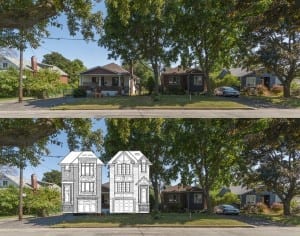
The Photoshop overlay regarding 9 Meaford Ave. is from David Godley. Click on image to enlarge it; click again to enlarge it further.
The applicant described his proposal for each house but would not discuss the severance. Residents opposed the severance. One person showed how the proposed front of the house could be built roughly corresponding within current zoning. Another wanted to know how the proposal could fit when the proposal was 3 times the storeys and 3 times the massing of abutting houses. Another wanted to know how Planning had reached their decision when none of the mathematical formulae relating to “predominant” justified approval.
Anthony replied that it was not just a formula but many things weighed in. There appeared to be agreement against a flat roof which the applicant had suggested and no opposition to reverse the garages so a solid piece of open space could be established between the driveways. Concern was expressed about a tree partially on the property, traffic and parking and surface water drainage.
However these meetings are highly educational both from the point of view of establishing facts and understanding the reasons for participant’s position. Also they counter the adversarial court like atmosphere nature of the Committee of Adjustment meetings where hours of waiting is involved. Citizens interact with those people with most influence in decision making. Although all groups were impassioned there was no name calling. It was a rollicking good meeting. There was chance also for individual conversations for half an hour at the end before we had to be turned out 1 hour after the time allocated.
NB The usefulness of this meeting could be significantly enhanced by having it prior to the Committee of Adjustment, prior to Planning Department comments and preferably prior to drawn up plans (although concepts would be useful). This is similar to the way a zoning bylaw is handled and this application is equivalent to a zoning bylaw change.
The Official Plan should be changed to include that those affected should be drawn into the process as early as possible use the Town of Dundas Official Plan wording. The severance and variance application go through a process for the benefit of citizens and to exclude them from the beginning of the process is unfair as is making a planning recommendation without their input.
In addition urban design and the third dimension including aesthetics is central to all the key sections of the Official Plan (Section 2, 3 and 4). The City’s Official Plan policy is to promote community awareness of planning issues in clear language and using innovative techniques. There was no mapped information. Basic information would include a scale facade or photoshop of the houses in the block in relation to the proposal, an analysis map of the street as described in Official Plan Amendment #320 clarifying the purpose of the Official Plan for density, lot frontage and number of storeys and a bird’s eye view showing the impacts on neighbours.
Sign Language
An anonymous flyer was delivered asking that the Urban Design Study be Stopped. The motif was the same as those signs asking for Sensitive Development. This was confusing for residents.
Our Councillor sent his own flyer to explain the purpose of the study and some inaccuracies that were mentioned in the mystery flyer. This can be viewed on his website.
About 100 of the signs asking for severances to be stopped have been removed or vandalised.
Still several hundred survive.
David Godley
I am an independent retired planner who is trying to achieve an equitable planning process.
I have been helping residents in Long Branch and elsewhere with planning issues pro bono since 2006 when my Committee of Adjustment terms were finished.
I am not a member of the Long Branch Neighbourhood Association or for that matter the Lawn Signs group.
Please keep me in touch with anything that you think my 100 or so recipients might wish to know.
[End of text from David Godley]
For contact information for David Godley, please refer to the previous post entitled:

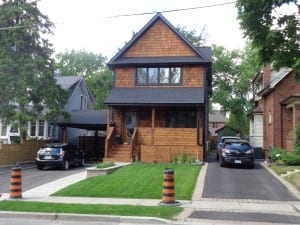
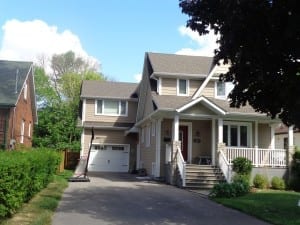
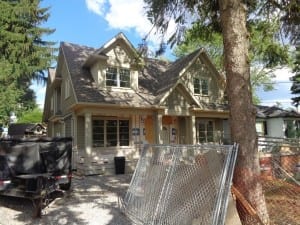
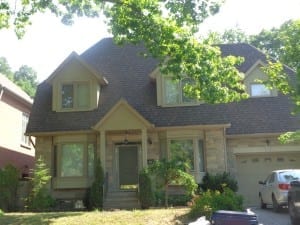


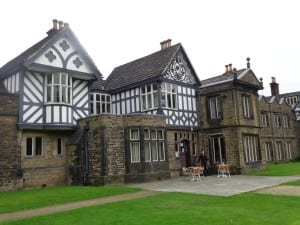
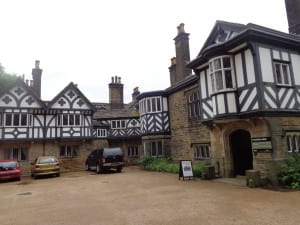
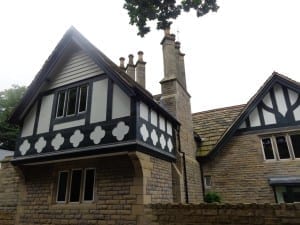
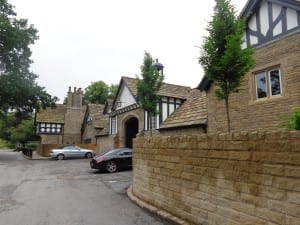
Leave a Reply
Want to join the discussion?Feel free to contribute!